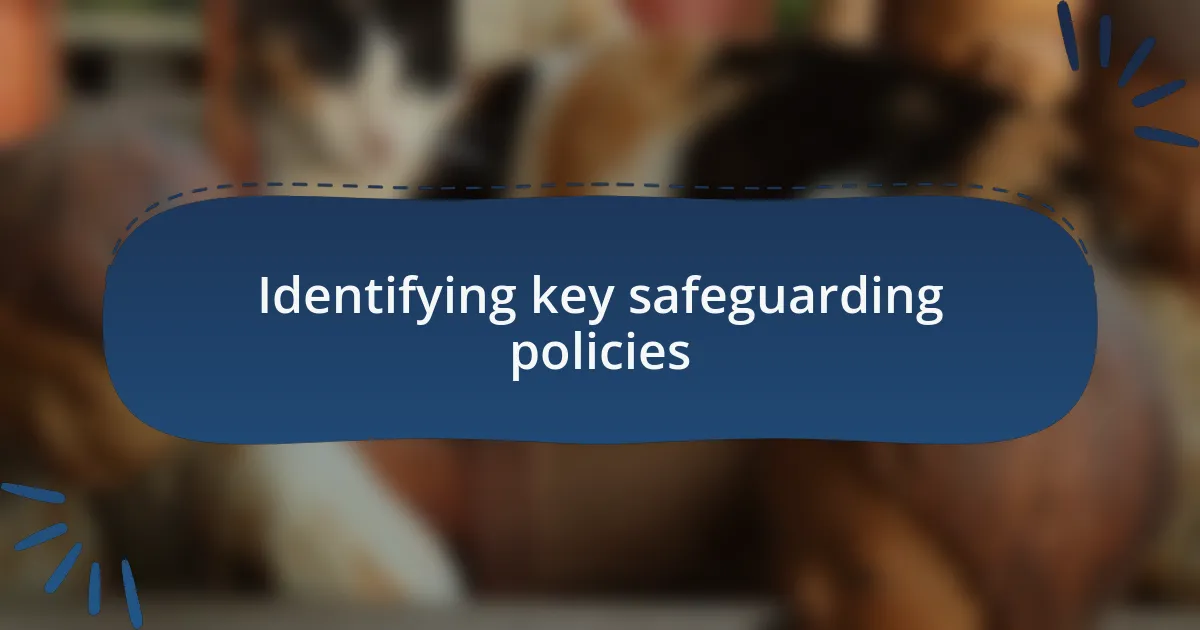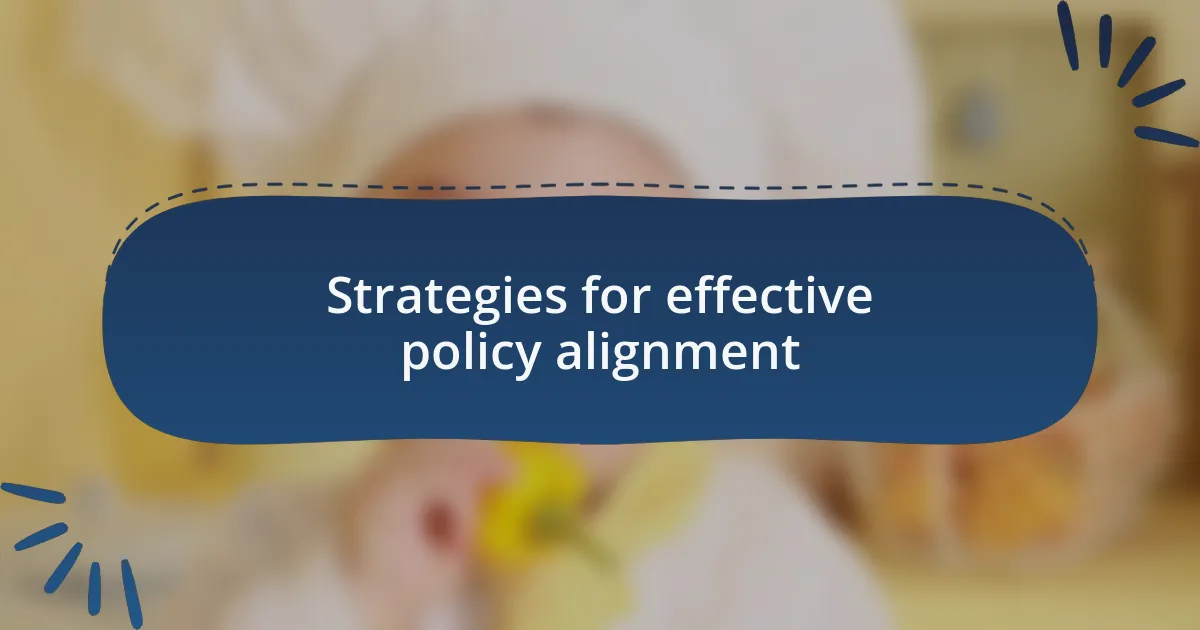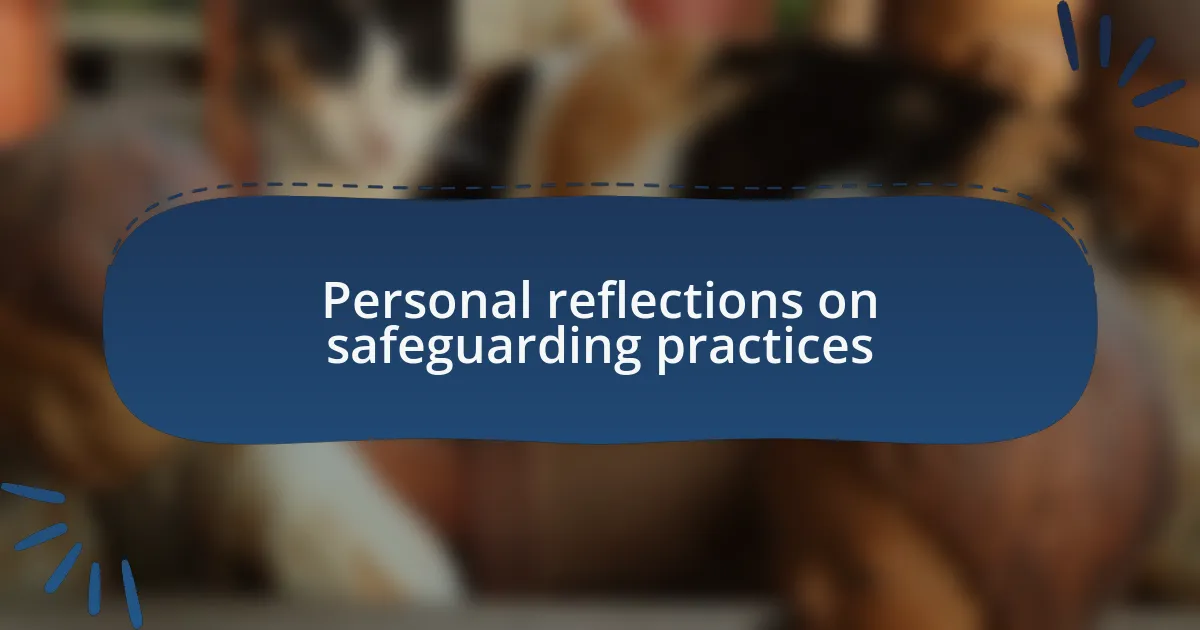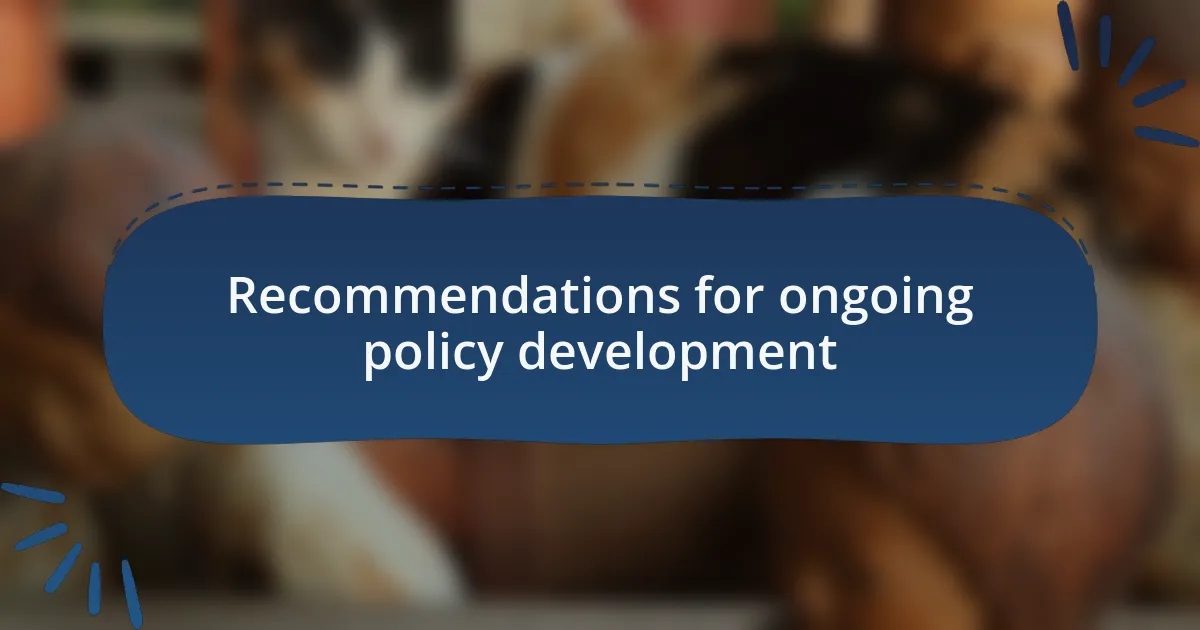Key takeaways:
- Children’s rights and voices should be prioritized in safeguarding practices to ensure their safety and well-being.
- Openness and transparency in safeguarding processes foster trust between adults and children, enhancing community engagement.
- Regular policy reviews and collaborative input from diverse stakeholders are essential for effective policy alignment and continuous improvement.
- Training and storytelling are critical tools in empowering staff, fostering a supportive environment, and reinforcing the importance of safeguarding practices.

Understanding child safeguarding principles
Child safeguarding principles revolve around creating an environment where children are protected from harm and can thrive. Reflecting on my experiences, I’ve noticed that when organizations prioritize these principles, there’s a noticeable shift in the children’s confidence and well-being. It makes you wonder: how can we instill this sense of safety across all aspects of a child’s life?
One of the core principles is the promotion of children’s rights, asserting that their voices must be heard and valued in decisions that affect them. I recall a workshop I attended where the facilitator encouraged children to share their thoughts on safety measures. Their insights were not just enlightening; they were profoundly impactful, highlighting a message that we often overlook: children often know what they need for their safety better than we assume.
Another essential aspect is the importance of openness and transparency. In my journey, I’ve observed that when adults are candid about the processes involved in safeguarding, it fosters trust—both with children and their families. This transparency can make us question: are we providing enough opportunities for dialogue within our communities, or are we falling into the trap of just implementing rules without meaningful conversation?

Identifying key safeguarding policies
When identifying key safeguarding policies, it’s crucial to focus on those that establish clear guidelines for behavior and responsibilities. I remember a time when my organization revisited our code of conduct. We found that having defined expectations for all staff members dramatically reduced incidents of inappropriate behavior. This made me realize how essential it is to have policies that everyone can refer to, ensuring accountability at all levels.
One particularly impactful policy I encountered outlines whistleblowing procedures. I once facilitated a session where staff shared their experiences related to reporting concerns. The openness about potential repercussions showed me that a robust whistleblowing policy not only protects children but also empowers adults to speak up without fear. Could it be that we underestimate the value of creating a safe space for adults to voice their concerns?
Furthermore, child protection training is a key policy that cannot be overlooked. During a training session, I witnessed firsthand how staff transformed their understanding of safeguarding issues. The difference was palpable, with many expressing newfound confidence to engage with children on sensitive topics. This reinforced my belief that continuous education in safeguarding is not just beneficial—it’s a necessity for effective protection measures.

Strategies for effective policy alignment
When it comes to aligning policies with organizational goals, I’ve found that collaborative input from diverse stakeholders is key. In a meeting, I once observed how involving staff members from various departments led to an energizing discussion about policy effectiveness. It struck me that when everyone contributes, not only do we gather a wealth of ideas, but the resulting policies also resonate more broadly across the organization. How often do we consider that a policy is only as strong as the support behind it?
One effective strategy I’ve implemented is establishing regular policy reviews. I remember a quarterly meeting where we revisited our child safeguarding framework and found areas for improvement that we had overlooked before. This practice not only enhances compliance but also fosters a culture that values continuous improvement. Isn’t it vital to reflect regularly on our commitments to ensure we remain aligned with our evolving goals?
Furthermore, integrating feedback mechanisms can significantly bolster policy alignment. In my experience, setting up anonymous surveys allowed staff to voice their thoughts on existing policies without fear. The insights gathered were eye-opening, highlighting gaps I hadn’t noticed, and reinforced my belief that fostering a dialogue is essential. How can we truly safeguard our children if we’re not actively listening to those on the frontline?

Personal reflections on safeguarding practices
Reflecting on my experiences with safeguarding practices, I’ve realized the profound impact that training can have on staff members. I conducted a workshop where we simulated real-life safeguarding scenarios, and it was incredible to witness the transformation in mindset. My colleagues were able to express their feelings of uncertainty and fear, which highlighted the importance of creating an environment where vulnerability is embraced. How can we expect effective safeguarding when our team is not equipped with the confidence to act?
One poignant moment that stays with me involved a young staff member who hesitated to report a concerning situation. After discussing our safeguarding policies, she shared her fears of being dismissed or criticized. This experience drove home the necessity of not only having policies but ensuring that team members feel empowered to speak up. It made me wonder, are we truly fostering an atmosphere of trust and support, where every concern can be heard?
Moreover, I find that storytelling can be a powerful tool in reinforcing safeguarding values. I once shared a narrative from my early career that showcased the real consequences of neglecting these practices. The room fell silent as everyone processed the weight of that experience. It reminded me that facts and figures are important, but personal stories resonate on a deeper level. How often do we use our own journeys to inspire others toward safeguarding excellence?

Recommendations for ongoing policy development
Ongoing policy development requires regular feedback from frontline staff who directly engage with children. I remember a time when we initiated quarterly feedback sessions where team members could voice their experiences with existing policies. These discussions often revealed gaps that we had not anticipated, and it was refreshing to see how even small adjustments could lead to significantly improved practices.
Additionally, it’s crucial to integrate real-life examples into policy updates. In one instance, I advocated for a policy revision after hearing about a child who slipped through the cracks due to vague reporting guidelines. By sharing this incident with the policy team, we were able to create clearer procedures that not only enhanced accountability but also provided staff with the tools they needed to act decisively. Have we considered the impact of our policies on those they are meant to protect?
Lastly, fostering a culture that prioritizes ongoing learning cannot be overstated. When I worked on a committee to revamp our safeguarding strategies, we included an element of continuous professional development as part of our recommendations. This not only demonstrated our commitment to the staff but also encouraged them to see the evolving nature of safeguarding. Are we equipping our teams not just to comply, but to thrive in their roles?